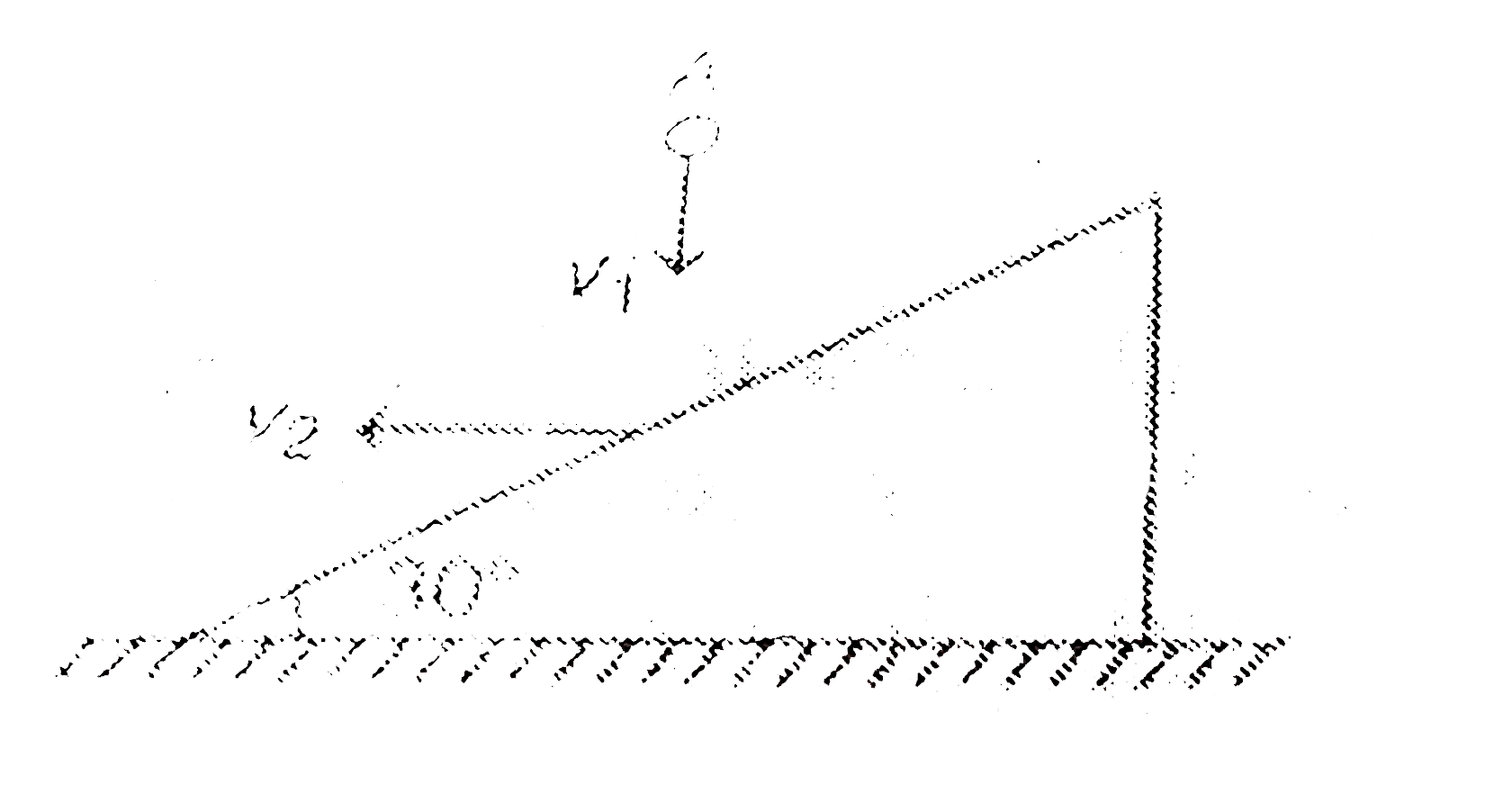A ball A is falling vertically downwards with velocity v1 . It strikes elastically with a wedge moving horizontally with velocity v2 as shown in figure . What must be the ratio v1v2 , so that the ball bounces back in vertically upward direction relative to the wedge

√3
1√3
2
12
Step by step video & image solution for A ball A is falling vertically downwards with velocity v_(1) . It strikes elastically with a wedge moving horizontally with velocity v_(2) as shown in figure . What must be the ratio (v_(1))/(v_(2)) , so that the ball bounces back in vertically upward direction relative to the wedge by Physics experts to help you in doubts & scoring excellent marks in Class 11 exams.
Updated on:21/07/2023Topper's Solved these Questions
- IMPULSE AND MOMENTUMBOOK - ANURAG MISHRACHAPTER - IMPULSE AND MOMENTUMEXERCISE - L-3,(P-1)
5 Videos
- IMPULSE AND MOMENTUMBOOK - ANURAG MISHRACHAPTER - IMPULSE AND MOMENTUMEXERCISE - P-2
9 Videos
- IMPULSE AND MOMENTUMBOOK - ANURAG MISHRACHAPTER - IMPULSE AND MOMENTUMEXERCISE - Level 1
110 Videos
- FORCE ANALYSISBOOK - ANURAG MISHRACHAPTER - FORCE ANALYSISEXERCISE - Matching type
13 Videos
- RIGID BODY MOTIONBOOK - ANURAG MISHRACHAPTER - RIGID BODY MOTIONEXERCISE - MATCH THE COLUMN
12 Videos
Similar Questions
A small ball falling vertically downward with constant velocity 2m/s strikes elastically an inclined plane moving with velocity 2m/s as shown in figure. The velocity of rebound of the ball with respect ground is

View SolutionA ball of mass m moving with velocity v collides head on elastically with another identical ball moving with velocity - V. After collision
View Solution
Knowledge Check
A shell is fired vertically upwards with a velocity v1 from a trolley moving horizontally with velocity v2. A person on the the ground observes the motion of the shell as a parabole, whose horizontal range is
A2v21v2gB2v21gC2v22gD2v1v2gA small ball falling vertically downward with constant velocity 4m/s strikes elastically a massive inclined cart moving with velocity 4m/s horizontally as shown. The velocity of the rebound of the ball is
 A402m/sB403m/sC4m/sD405m/s
A402m/sB403m/sC4m/sD405m/sIn the figure block moves downwards with velocity v1, the wedge rightwards with velocity v2. The correct relation between v1 and v2 is
 Av2=v1Bv2=v1sinθC2v2sinθ=v1Dv2(1+sinθ)=v1
Av2=v1Bv2=v1sinθC2v2sinθ=v1Dv2(1+sinθ)=v1
A heavy ball of mass 2M moving with a velocity v0 collides elastically head on with a cradle of three identical ball each of mass M as shown in figure. Determine the velocity of each ball after collision.

View SolutionA ball of mass m=1kg falling vertically with a velocity v0=2m/s strikes a wedge of mass M=2kg kept o a smooth, horizontal surface as shown in figure. The coefficient of resitution between the ball and the wege is e=1/2. Find the velocity of the wedge is e=1/2. find the velocity of the wedge and the ball immediately after collison.

View SolutionA ball of mass m moving vertically down , collides with inclined surface of the wedge . After the collision , wedge starts moving in horizontal direction with velocity v0 . If all the surfaces are smooth then impulse applied by wedge on the ball during collision is given by

View SolutionA ball is projected horizontally from an inclined plane with a velocity V, as shown in the figure. It will strike the plane after a time

View SolutionA ball is thrown vertically upwards from the top of tower of height h with velocity v . The ball strikes the ground after time.
View Solution
